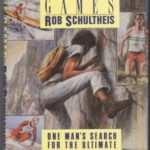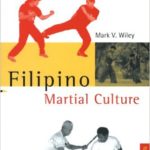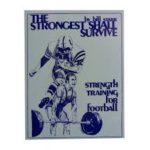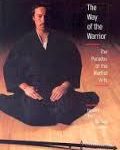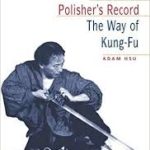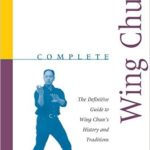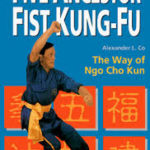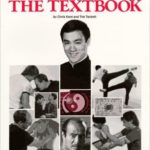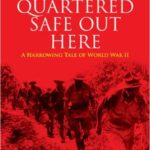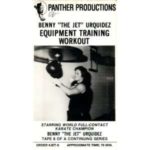THE WAY OF THE WARRIOR: The Paradox of the Martial Arts By Howard Reed and Michael Croucher (The Century Publishing Co., London, 1983)
This book is a nice overall survey of some selected fighting arts from the East, including what for the time of publication was quite a lot of good information on the Indian fighting art of kalaripayit (kalarappayattu), hereafter referred to as KP, to save me time trying to spell it, since every time I come up with a different version. Since the other arts covered (Okinawan karate, Japanese kenjutsu / swordfighting, Chinese fighting arts) are better known, and information in the form of books and articles are readily available, I will concentrate on KP in this review.
“Kalari”, we are told, means battlefield or place, and “payit” means practice, so kalaripayit means “battlefield training or practice.” Previous to this, KP had received very little publicity, and I am not aware of any other books that have been published in English on it, with the exception of When the body becomes all eyes, by Phillip Zarrilli. Another creditable exception to the general lack of information is anthropologist Joseph Alter’s fine book on Indian wrestling, The Wrestler’s Body: Identity and Ideology in North India (University of California Press, 1992), but this is a scholarly book, not a hands-on guide aimed at the general public. I am not aware of much on the weapon arts of the Indian subcontinent, though I did recently come across a brief essay on thangkairol (Manipuri sword fighting) by Jonathan Kenoyer in Personal Growth Through the Martial Arts: Studies in Kendo, Fencing, and Indian Swordsmanship, edited by Kiyotaka and Lee (University of Wisconsin, 1977).
If there is anything else available out there on Indian fighting arts, please let me know. I would be delighted to review it. In the section on KP in The Way of the Warrior, we are told that there are two main styles, a Southern style practiced by Tamil speaking people, and a Northern one, practiced mainly by Nayars. The Southern style is centred in the extreme south west of India and the city of Madras on the East Coast, while the Northern style seems to cover the West Coast of South India. To quote from the book, “In both styles the art of kalaripayit is composed of four branches of combat techniques. There is unarmed training; training with bamboo or rattan sticks; training with a range of weapons; and for the advanced students there are the secret techniques of striking vital points, known as marma -adi.”
There is some intriguing stuff here, and a lot of leads to explore; the relationship with Yoga, cross fertilization both within the various Indian arts as well as between the Indian martial arts and the martial arts of other countries. An enormous amount of research into the native fighting arts of India is waiting to be done.
To digress for a moment, it is somewhat surprising that Indian fighting arts so far unfortunately do not seem to have had the attention they deserve. The huge size and amazing cultural diversity of the subcontinent deserve better than this. There is of course an overview of Indian fighting arts in Draeger and Smith’s Comprehensive Fighting Arts (Kodanshi International, 1980), which concentrates mostly on wrestling in Northern India, but it seems to have been cobbled together mostly from secondary sources. There has also been the occasional article over the years in HOPLOS, and more recently Hop-lite, the publications of the International Hoplology Society.
Shortly before his untimely death in the early 1980s, Donn Draeger, who revived the study of Hoplology, was planning his next big project, which would have been the first trip of a series to make an overall survey of the fighting arts of the Indian subcontinent. His last field trip, if I remember correctly, was to Sri Lanka (Ceylon) in 1980 with Hunter Armstrong. I do know that Draeger was planning a trip to Assam in north east lndia shortly before his death, to examine the fighting arts of the Naga in particular, and hoping to work his way up towards the Tibetan border, and make contact with ethnic Tibetans versed in their traditional fighting arts.
In 1986, the IHS made a preliminary field survey of the Rajasthan region, which is well known for its martial history, but was forced to put follow up trips on hold for a number of years due to lack of funds. This has now been remedied, and the Director of the IHS, Hunter Armstrong, and IHS Board Member, Mr. Karunakaran of Malaysia, have just returned from what it is hoped will be the first of a series of field trips to the Indian subcontinent. See the summary of the IHS Preliminary Field Report for details. (If you are interested in supporting IHS efforts in this regard, please contact us at hoplos@aol.com, or see our website at International Hoplology Society).
Getting back to the book under review, in general the BBC appears to have been well advised, or perhaps, as professionals who are accustomed to researching things efficiently, they deserve the credit themselves. They have certainly managed to line up some outstanding masters and systems, among whom the better known ones are Hung I-hsiang of Taipei, a master of Chinese internal martial arts featured in R.W. Smith’s Chinese Boxing.. Masters and Methods; Otake Risuke Shihan of the Katori Shinto ryu, representing classical Japanese martial arts, well known from Donn Draeger’s writings as one of the foremost styles of kenjutsu extant today in Japan; and Higaonna Morio Sensei, also well known as a master and teacher of Okinawa Goju-ryu Karate. There are a host of other styles and teachers covered in less depth.
For those who do not know of these three masters, the book will be interesting, but for those in the know, as it were, there is little or no new ground covered. Overall, I would say that my main criticism of the book, which is in general well produced, is that it is an etic work, that is, it is the work of outsiders, rather than of insiders (i.e., the practitioners themselves). What we have here is an intelligent selective survey by some thoughtful people who are accustomed to research, some of whom have experience in some or other martial art, but who are not both professional scholars and researchers of fighting arts, and emic (insider) practitioners themselves such as the late Donn Draeger was.
There are a few glitches; someone has managed to switch a couple of action sketches. The illustration on page 165, purporting to be of Higaonna Sensei doing a strike to the ribs and a take down appears to be of Shorinji kempo, and should be on page 208, and vice-versa. Actually, that’s a good example of how it helps to be an insider/practitioner yourself. Another mistake which should have been caught is the spelling ‘daimio’ instead of “daimyo” (a Japanese feudal lord), on page 226. What’s the good of having a glossary if it’s not accurate?
This book was originally intended as a companion volume to a BBC TV series The Way of the Warrior. For those who are interested in any of the arts or masters covered in this book, and who have not had the opportunity to see them in person, the video would certainly give them a far better idea than the written word, and I would strongly recommend that they make the effort to obtain a copy. Just watching a swordsman of the calibre of Otake Sensei in action is an education in itself. Having both the book and the video would be to have the best of both worlds.
